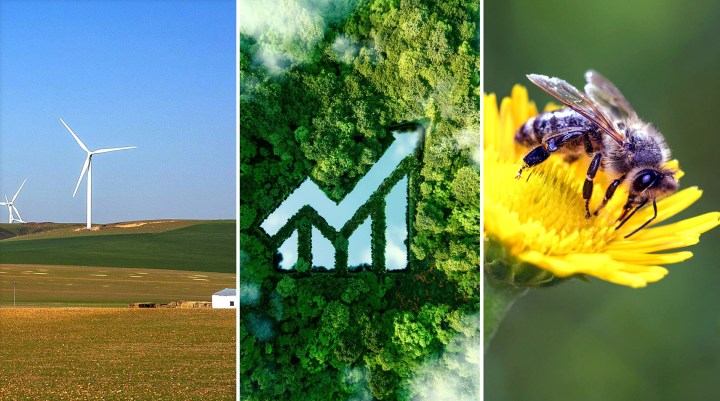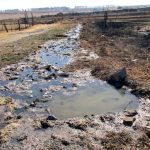ROAD TO COP28
Five things to watch out for at COP’s biggest gathering yet, this time in Dubai

It’s the most exciting time of the year for climate experts as they prepare to gather in Dubai for the 28th Congress of the Parties. This year’s gathering is expected to be the biggest yet and will be watched closely, particularly as the host country generates much of its wealth from fossil fuels.
Climate experts and stakeholders will be gathered in Dubai in the United Arab Emirates from 30 November to 12 December for the 28th annual Congress of the Parties (COP28) meeting. It is expected to attract about 70,000 delegates.
The conference comes at a time when the earth is reaching tipping points – biological indicators signal near-collapse — and 2023 is projected to be the hottest year on record following extreme average temperatures and heat waves that have resulted in wildfires and flash floods.
COP28 will seek to address how the world can best tackle climate crisis issues. The gathering will see experts and stakeholders address issues such as adaptation, mitigation, climate financing, loss and damage, among many other topics.
There’s so much to look out for at the gathering, particularly with climate-vulnerable countries – mainly in the global south – increasingly feeling the devastating impacts of the climate crisis.
Here are five key issues that could have a ripple effect on other climate concerns and hopefully push the globe closer to getting ahead of planetary devastation.
1. Climate finance
Money talks! And when it comes to climate issues, money is key to addressing climate impacts and helping countries build resilience and adapt to a changing climate.
While climate finance has always been central to combating the climate crisis, it was only in 2009 that countries first committed to financially aiding developing countries to shield themselves from climate change impact. This pledge was initially put at $100-billion per year until 2025.
Read more in Daily Maverick: Big shortfall in climate funding needed by developing countries is ‘hugely worrying’ – Unep
Time is ticking, moving closer to the end of that pledge. Looking beyond 2025, developing countries will be tabling how developed countries can fare better in meeting the commitments they have so far failed to honour.
Furthermore, developing countries will also be looking into how they can better hold developed countries accountable to ensure that these financial commitments are met.
Developing countries are also looking into restructuring the financial system to ensure they do not accumulate debt when seeking climate finance. The figure many organisations and think tanks have rounded on when it comes to the amount developing countries need in climate financing is an estimated $1-trillion per year by 2030.
2. Loss and damage
Climate disasters are on the rise, with the impact worsening each time; costing lives and livelihoods and damaging infrastructure – put simply, loss and damage. Losses and damages are currently not well compensated and last year, at COP27 in Sharm el-Sheikh, Egypt, countries sought to rectify this by announcing the Loss and Damage Fund.
While this was lauded as progressive, the fund did not hash out many details and some saw it as just an empty bank account. This year, climate-vulnerable countries that have already experienced extensive losses and damages are seeking to conclude the inner workings of the fund.
Details such as who will contribute to the fund and what the criteria are for countries to claim from the fund, as well as determining the definition of “loss and damage” are some of the specifics that need to be thrashed out for countries to benefit from such a mechanism.
3. Early warning systems
Early warning systems have saved millions of lives in the wake of catastrophic climate events, as well as saving billions in infrastructure damage. Important to watch at this COP will be how countries commit to implementing early warning measures, as well as how much money will be committed or redirected towards early warning systems.
Last year, UN Secretary-General António Guterres launched the Early Warning Systems for All on Earth action. The initiative is an ambitious effort seeking to protect people from hazardous climate events through early warning systems by the end of 2027.
Further investment and pledges into this initiative are something to keep a close eye on during the two-week negotiations.
4. Global stocktake
As part of COP28, countries will be checking in with each other on what they have or haven’t done to reduce greenhouse gas emissions.
The Global Stocktake is a mechanism put in place at COP15 in Paris to measure climate action thus far, and whether those actions align with the Paris Agreement.
This will be the first time that the report will be presented since it was established. The stocktake is also important as it sets the agenda for how countries can further reduce emissions in their own capacity through their nationally determined contributions (NDCs).
Currently, reports from the United Nations have repeatedly shown that we are not on track to limiting global warming to 1.5°C, in line with the Paris Agreement.
With the first global stocktake likely to emphasise that we are failing to meet the goals of the Paris Agreement, there are hopes that this will push countries to take on more ambitious climate action goals.
Read more in Daily Maverick: ‘Humanity has opened the gates to hell,’ says UN chief after major report issues climate crisis warning
5. Just Energy Transition partnerships
Just Energy Transition Partnerships (JETP) are key to ensuring countries meet their mitigation targets by moving away from fossil fuel energy reliance towards renewable energy sources.
South Africa was the first country to lock in a JETP at COP26 in Glasgow, Scotland, receiving $8.5-billion in a mixed bag of funding consisting of concessional and other loans and grants from France, the European Union, Germany, the UK and the US.
Read more in Daily Maverick: South Africa secures ‘watershed’ finance deal to reduce coal reliance
However, this funding was a small portion of what South Africa needs to ensure a holistic just energy transition. The country has received additional funding from the Netherlands, Denmark and Spain, boosting its funding to $11.8-billion.
The country, however, needs R1.5-trillion (about $80.4-billion) to fully implement its transition across the green hydrogen, electricity and electric vehicles sector.
Read more in Daily Maverick: New investment pledges boost South Africa’s just energy transition funding pool to $11.8bn
Indonesia is also part of a JETP for $20-billion in finance over three to five years.
Key to watch out for is which countries partner with each other to lock in further JETP and ensure that countries heavily reliant on fossil fuels can lower their emissions through renewable energy sources. DM





















 Become an Insider
Become an Insider
And no mention of China , the worlds single biggest polluter 🙂
And still a ‘developing country ‘ with a space lab 🙂